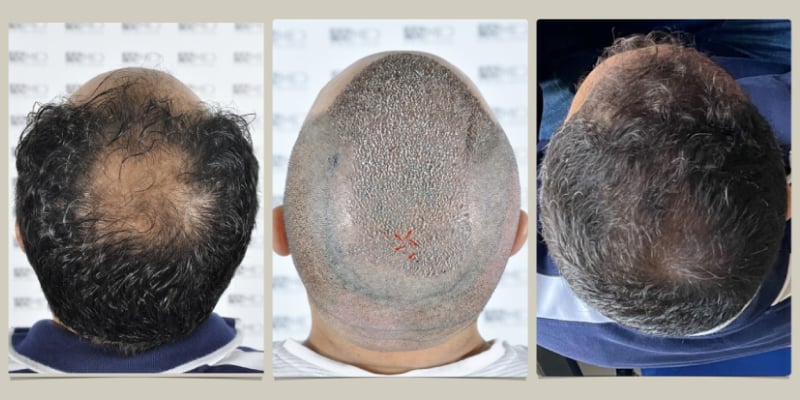The Evolution of Hair Transplants in London: A Modern Perspective

Hair transplants have come a long way since their inception, evolving from rudimentary techniques to highly sophisticated procedures that deliver natural, lasting results. London, a global hub for medical advancements, has played a pivotal role in the development and refinement of hair transplant techniques. Today, a London hair transplant can offer patients a high-quality, minimally invasive solution to hair loss, helping them regain their confidence and youthful appearance. This article will explore the history and modern evolution of hair transplants in London, highlighting key advancements and the current state of the industry.
The Early Days of Hair Transplantation
The concept of hair transplantation dates back to the 1950s, when Dr. Norman Orentreich, a pioneering dermatologist, conducted the first successful hair transplant procedure. His technique involved transplanting hair follicles from the back of the scalp (where hair is genetically resistant to balding) to the balding areas on the top and front of the scalp. While groundbreaking, the procedure at the time left patients with unnatural, “pluggy” results, with large groups of hair follicles transplanted at once. This early method was far from perfect, but it laid the foundation for future innovations.
The first transplants were limited to small areas of the scalp and often resulted in noticeable scarring, leaving patients with results that were difficult to conceal. However, this marked the beginning of a journey that would lead to more refined techniques and the modern, minimally invasive methods used in London hair transplant clinics today.
The Advancements in the 1990s: The Introduction of Follicular Unit Transplantation (FUT)
In the 1990s, significant advancements were made with the introduction of Follicular Unit Transplantation (FUT). FUT involves removing a thin strip of scalp from the donor area, typically from the back of the head, and then dissecting it into individual follicular units. These follicular units are then transplanted into the thinning or balding areas.
FUT was a breakthrough in hair transplant technology because it allowed for the transplantation of hair follicles in their natural grouping, providing much more natural results than the earlier “plug” method. However, the FUT procedure still left linear scars, which could be visible if patients chose to keep their hair short. Despite this, the results were far superior to previous methods, and the technique gained widespread adoption in London and worldwide.
The 2000s: The Rise of Follicular Unit Extraction (FUE)
The early 2000s saw the development of an even more advanced hair transplant technique: Follicular Unit Extraction (FUE). Unlike FUT, FUE does not involve the removal of a strip of scalp; instead, individual hair follicles are extracted directly from the donor area using a small, circular punch tool. These follicles are then transplanted into the recipient areas, which reduces the need for a linear incision.
FUE revolutionized hair transplantation because it is minimally invasive and leaves no visible scarring. The procedure is also less painful and requires a shorter recovery time than FUT. As a result, FUE became the go-to method for hair transplants in London clinics, where patients were increasingly seeking natural-looking results with minimal downtime.
FUE’s popularity grew rapidly, particularly for individuals who wanted to wear their hair short without worrying about visible scars. The ability to extract hair follicles from various parts of the scalp, as well as the improved aesthetics of the results, made FUE a preferred choice for both surgeons and patients alike.
Modern Techniques and Technology: The Role of Robotic Assistance
In recent years, the field of hair transplantation in London has seen further technological advancements, particularly with the introduction of robotic assistance. The ARTAS robotic system, for example, uses advanced algorithms and high-definition imaging to identify and extract hair follicles with extreme precision. The robotic system not only enhances the accuracy of follicle extraction but also reduces the risk of human error, leading to faster recovery times and more natural results.
Robotic assistance also improves the efficiency of the procedure, making it possible to transplant a larger number of follicles in a shorter time. This technology is particularly beneficial for patients with large areas of baldness or those who require a high number of grafts. As a result, robotic hair transplants have become increasingly popular in London, where cutting-edge technology is often used to deliver exceptional outcomes.
The Future of Hair Transplants in London
Looking ahead, the future of hair transplants in London is likely to be shaped by even more technological innovations. One area of potential development is the use of stem cell therapy to regenerate hair growth. Scientists are exploring the possibility of using stem cells to stimulate the growth of new hair follicles in areas of the scalp that are bald or thinning. While this technology is still in the experimental phase, it holds significant promise for the future of hair restoration.
Additionally, advances in genetic research may lead to more personalized treatments, where the transplant procedure is tailored to an individual’s unique hair loss pattern and genetic predisposition. These advancements could further enhance the quality of results and minimize the risk of complications.
Why Choose a London Hair Transplant?
London has become a global leader in the field of hair restoration due to its advanced medical practices, highly skilled surgeons, and access to the latest technologies. Clinics in the city are known for offering world-class services that attract patients from all over the globe. With a focus on delivering natural, permanent results, London hair transplant providers use the most up-to-date techniques to ensure patient satisfaction.
Whether you are looking for a minimally invasive procedure like FUE or exploring newer technologies like robotic-assisted transplants, London offers a range of options to suit different needs and budgets. When choosing a clinic, it is essential to research the qualifications of the surgeon, the clinic’s reputation, and the techniques they use to ensure that you are getting the best possible care.
Conclusion
The evolution of hair transplants in London has come a long way, from early attempts to the modern, cutting-edge procedures available today. With the advent of FUE, robotic assistance, and ongoing research into new technologies, the future of hair restoration looks promising. For those considering a London hair transplant, the advances in technique and technology offer a range of options that can restore hair and confidence with minimal scarring and downtime.







